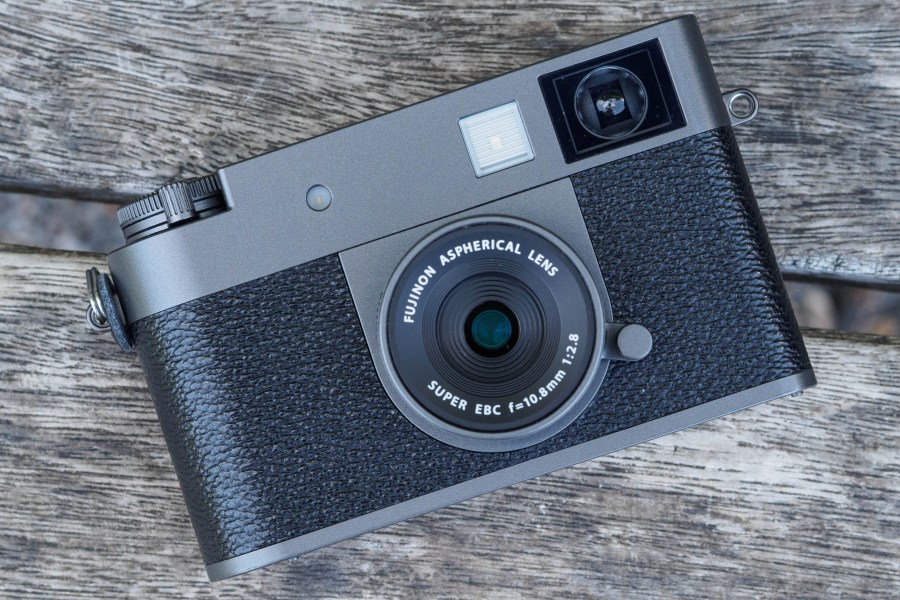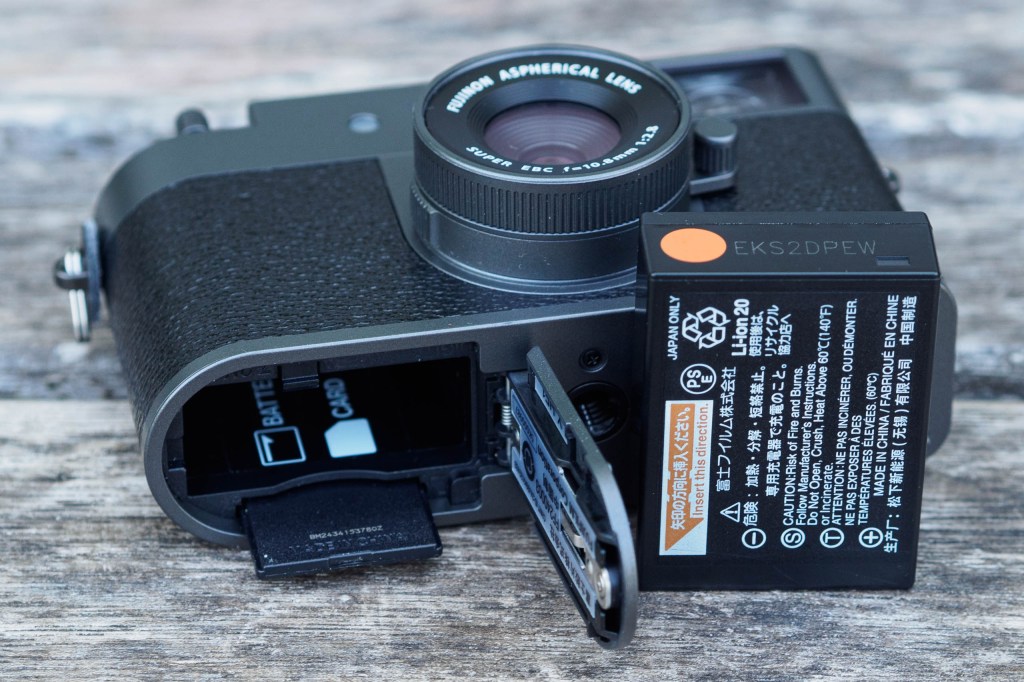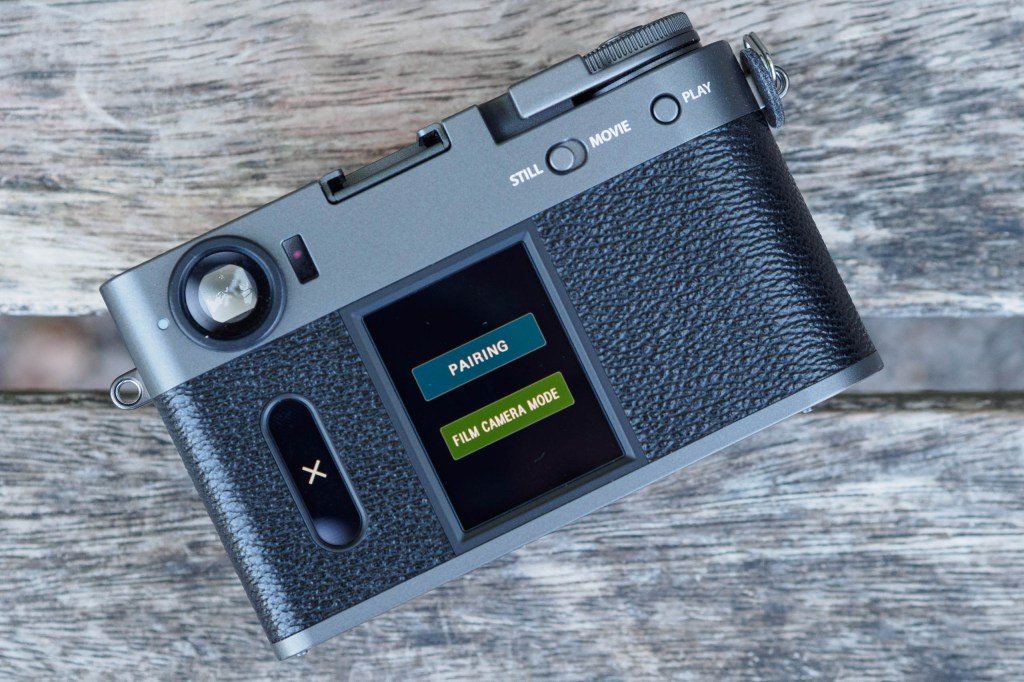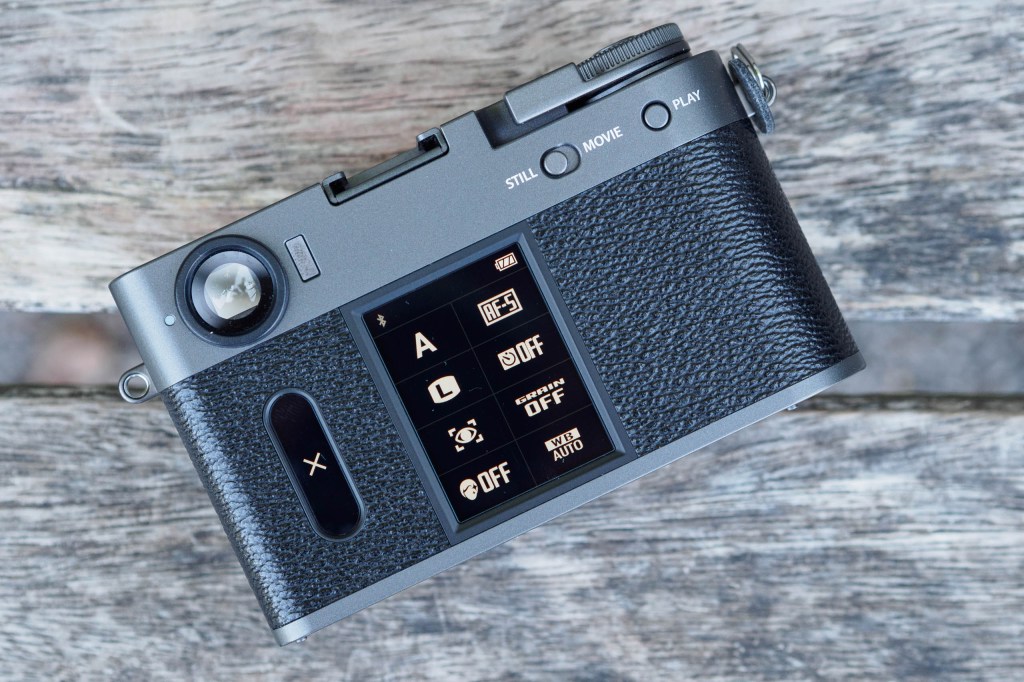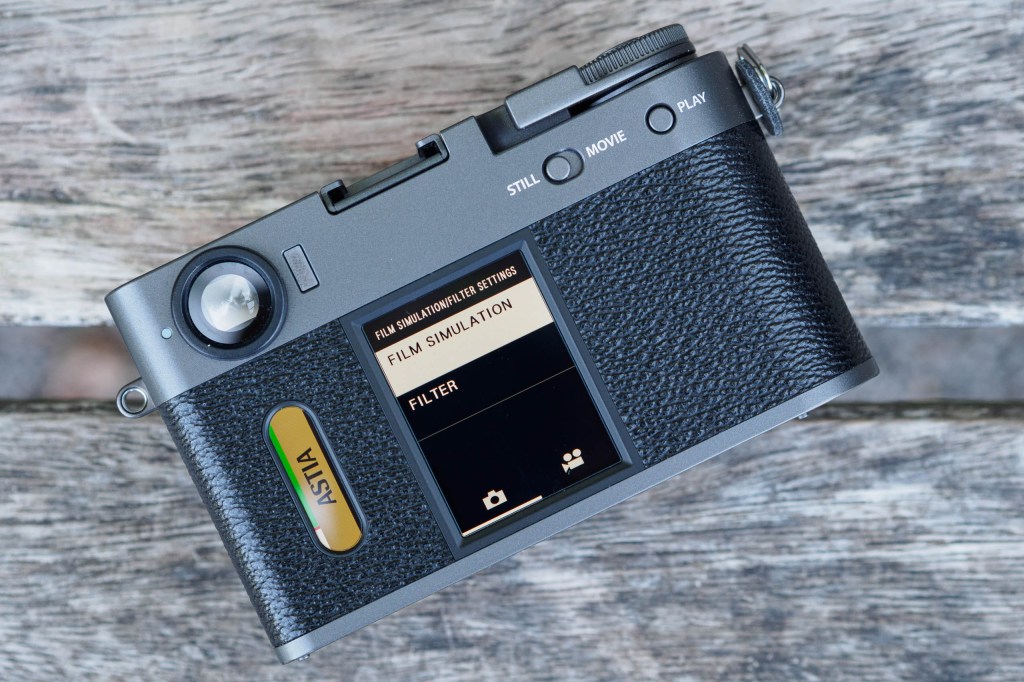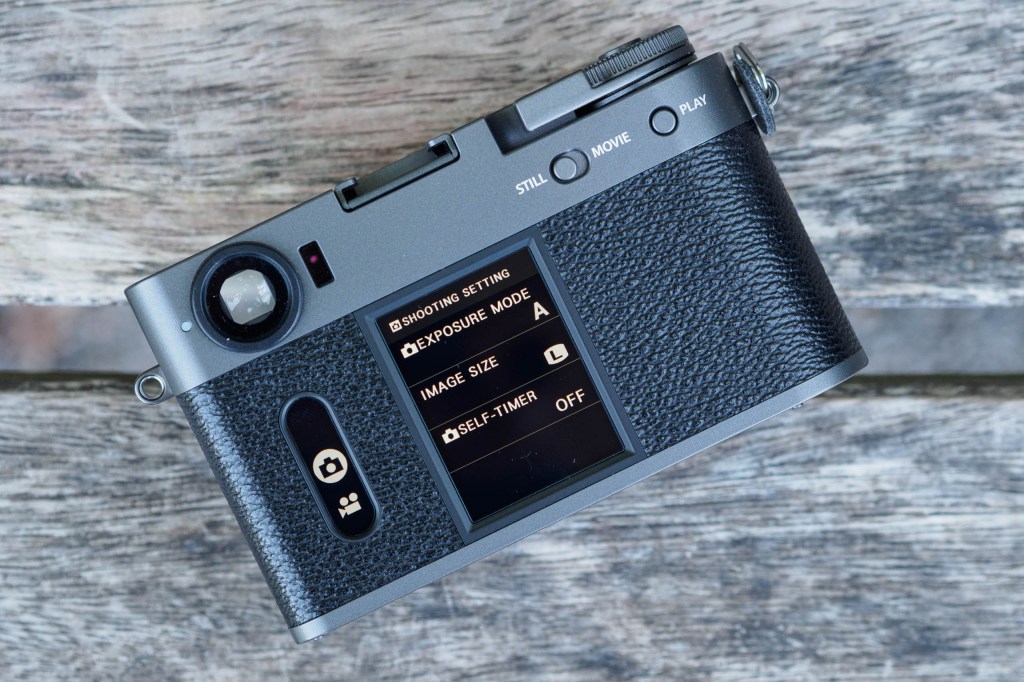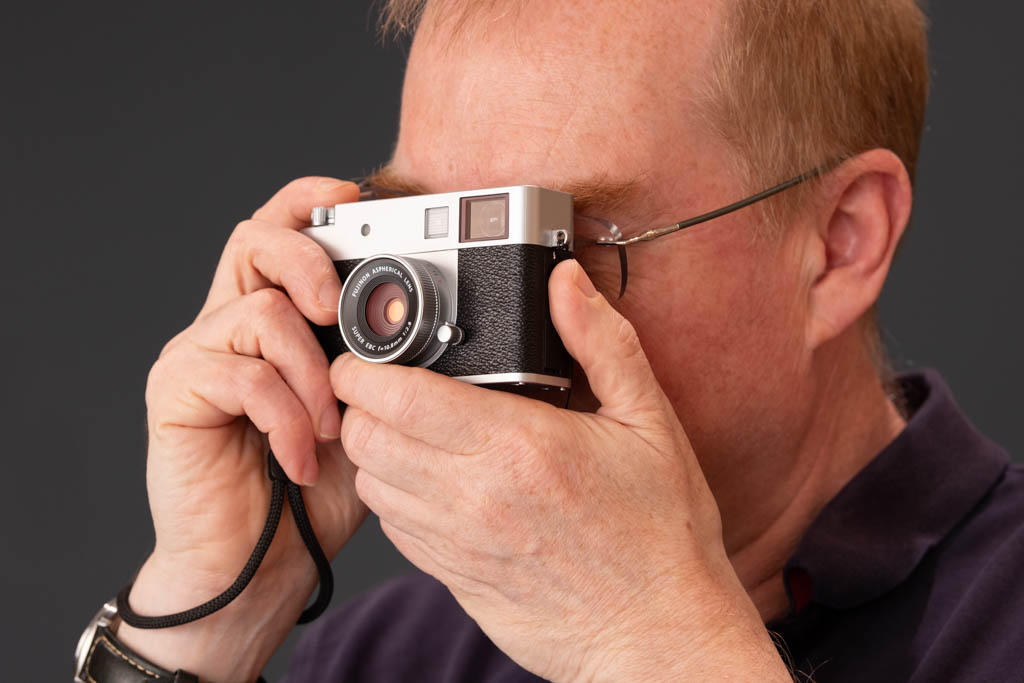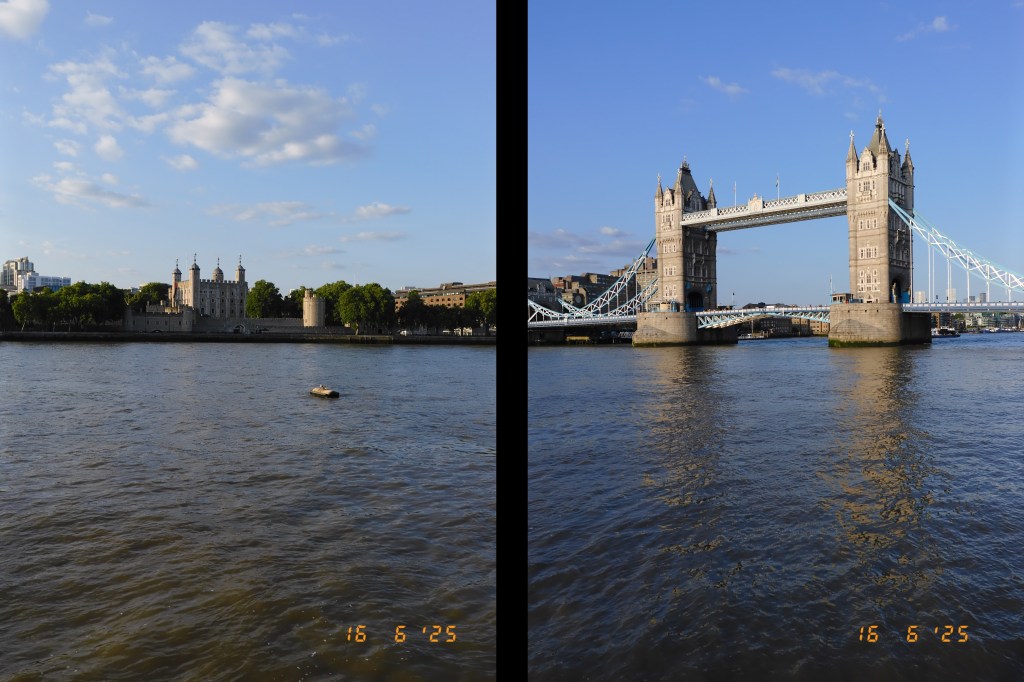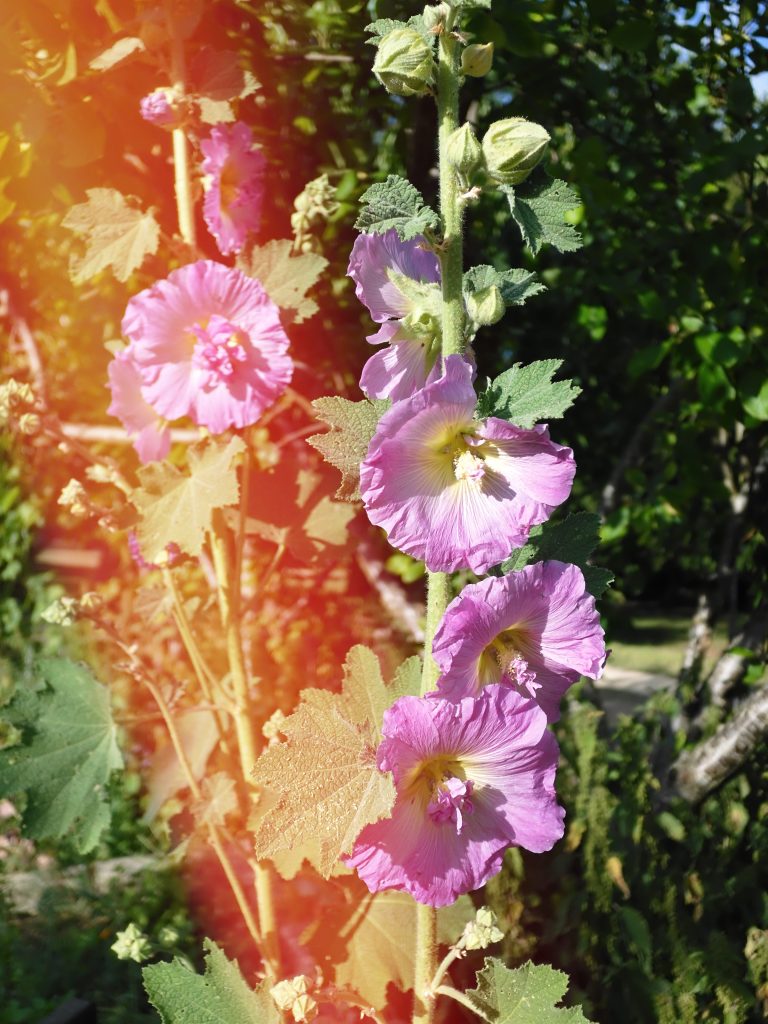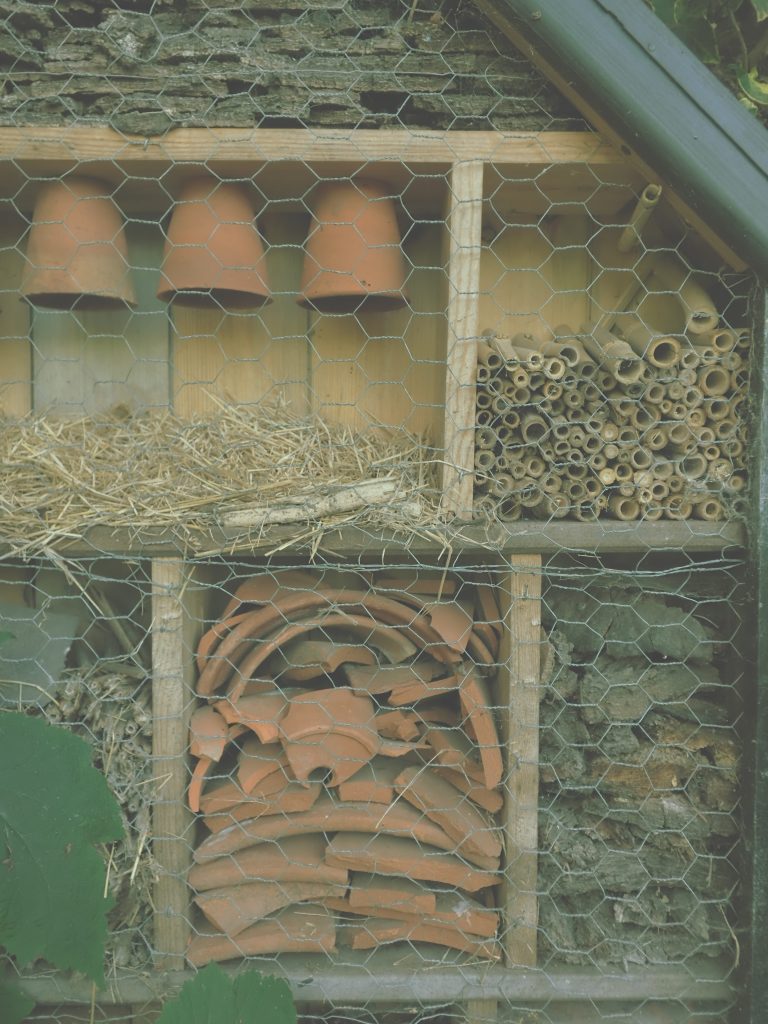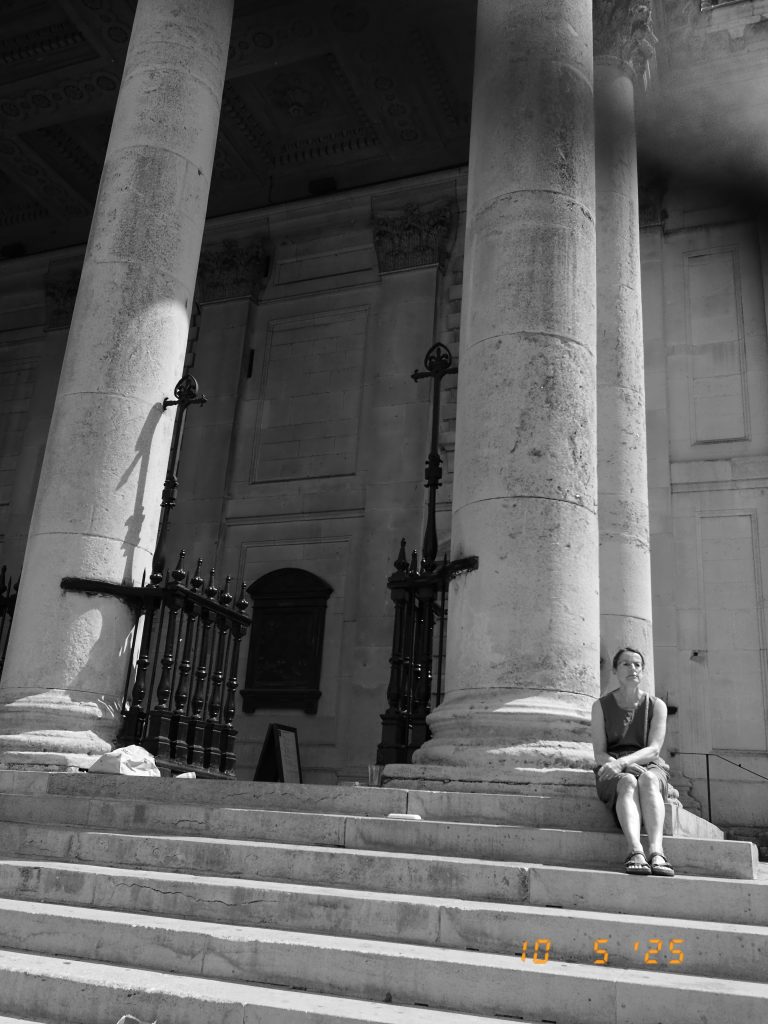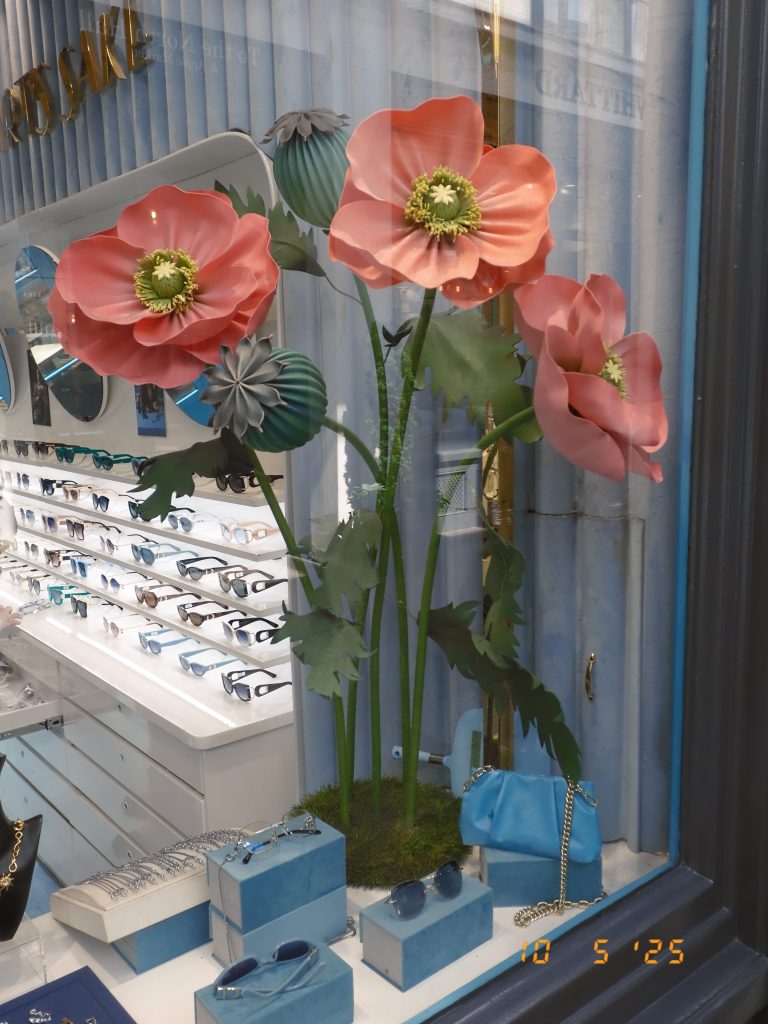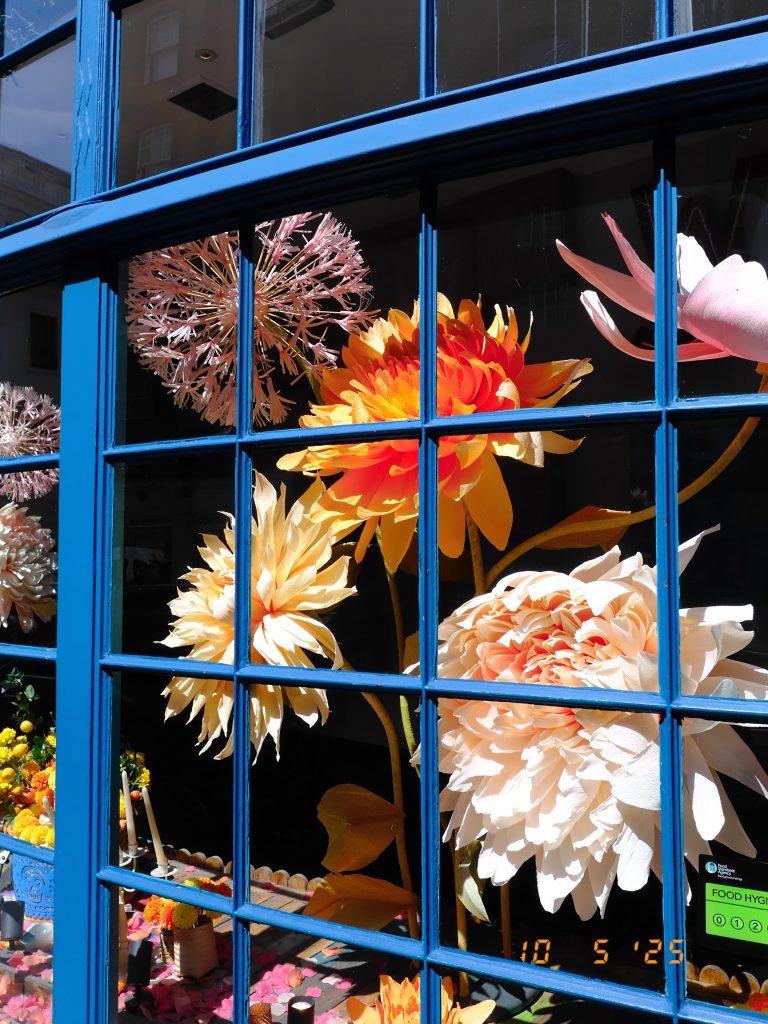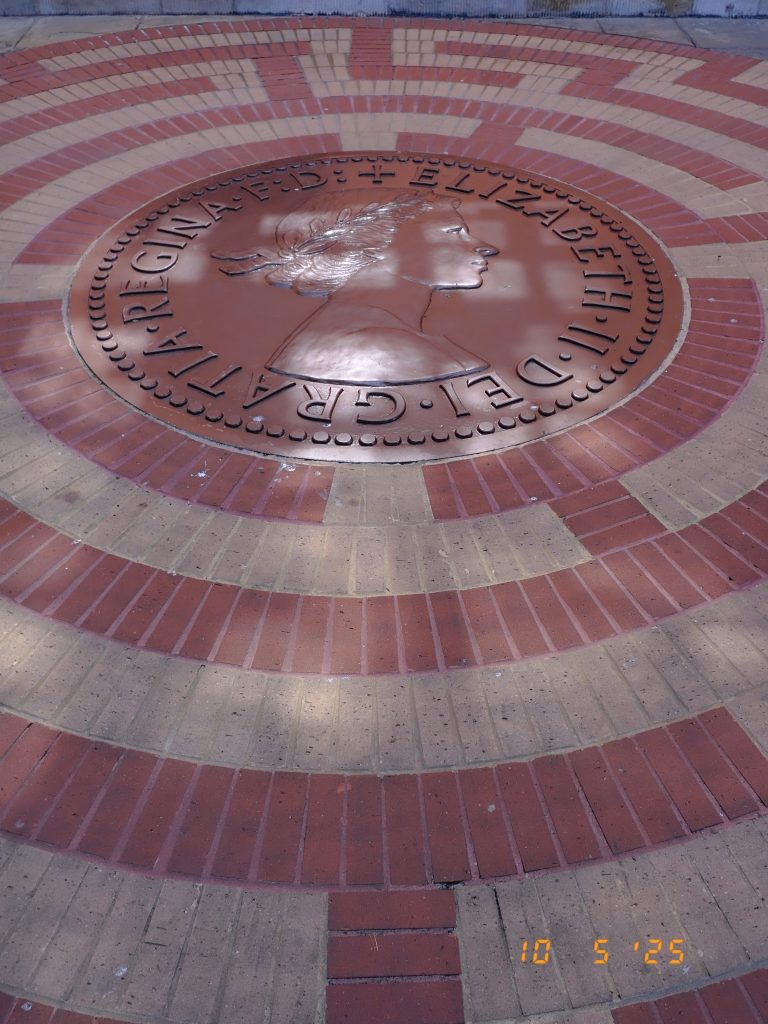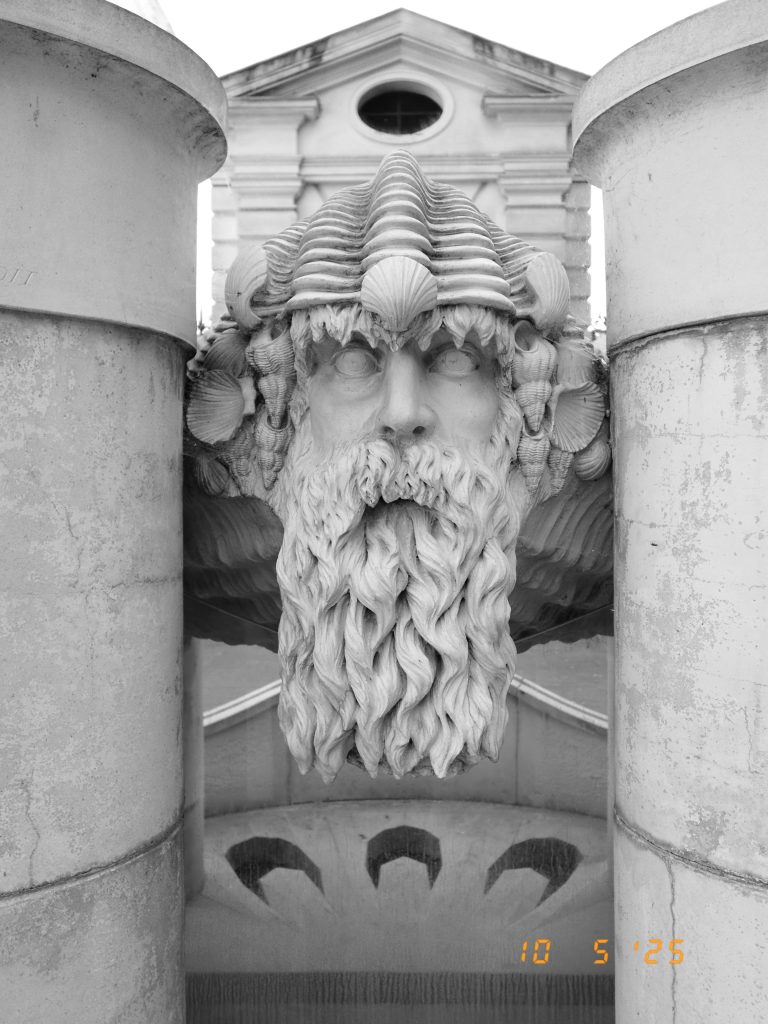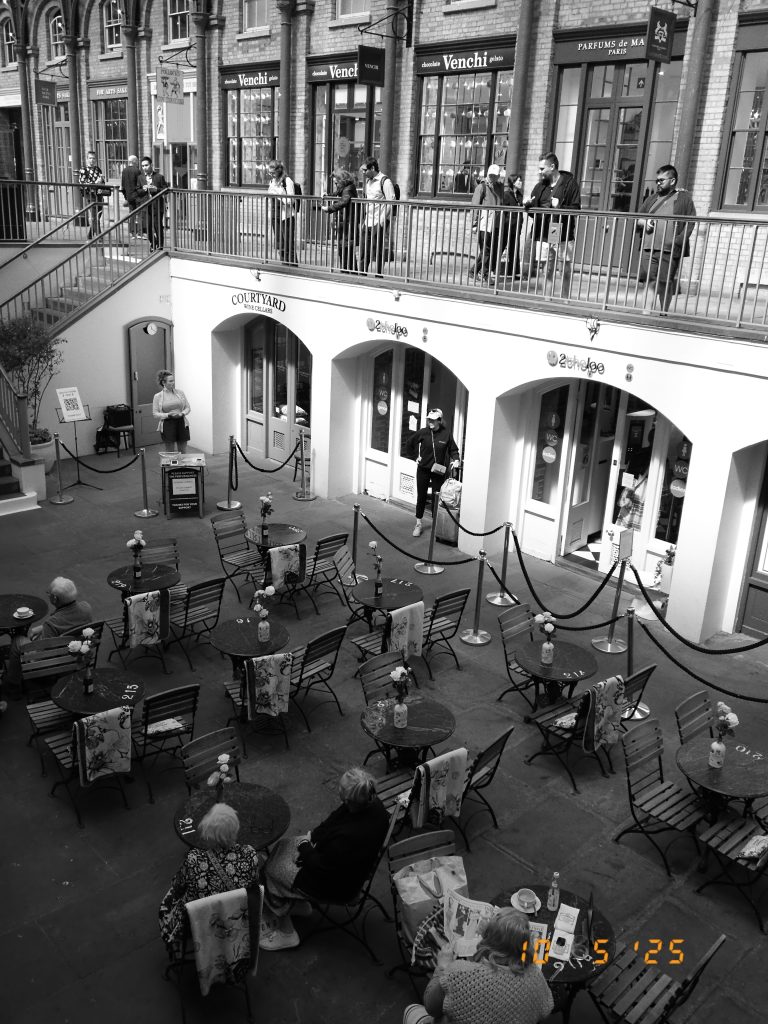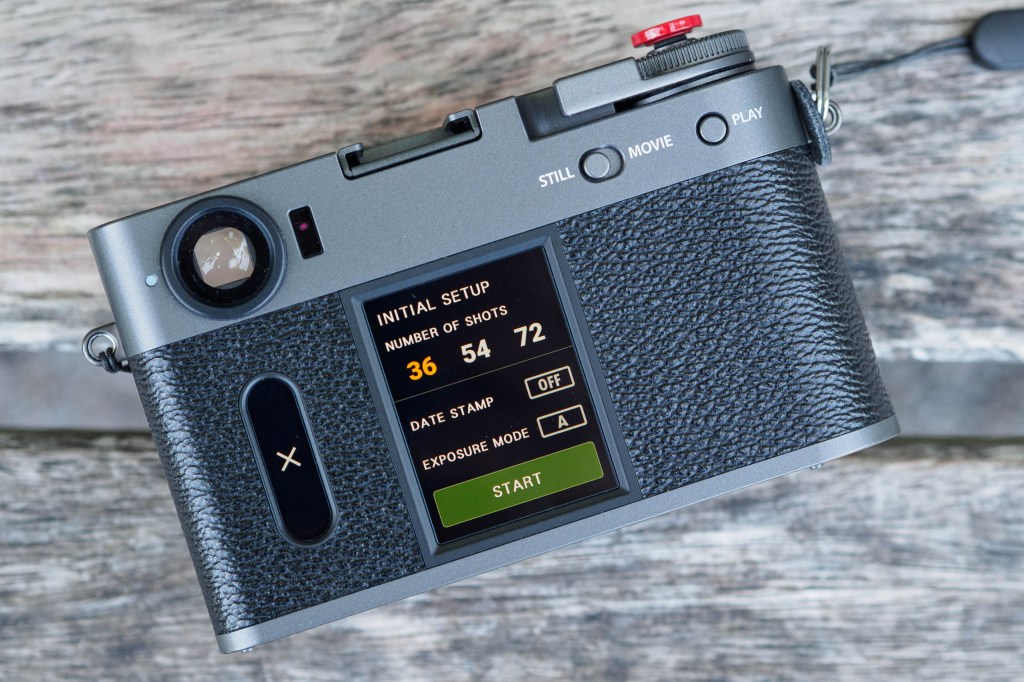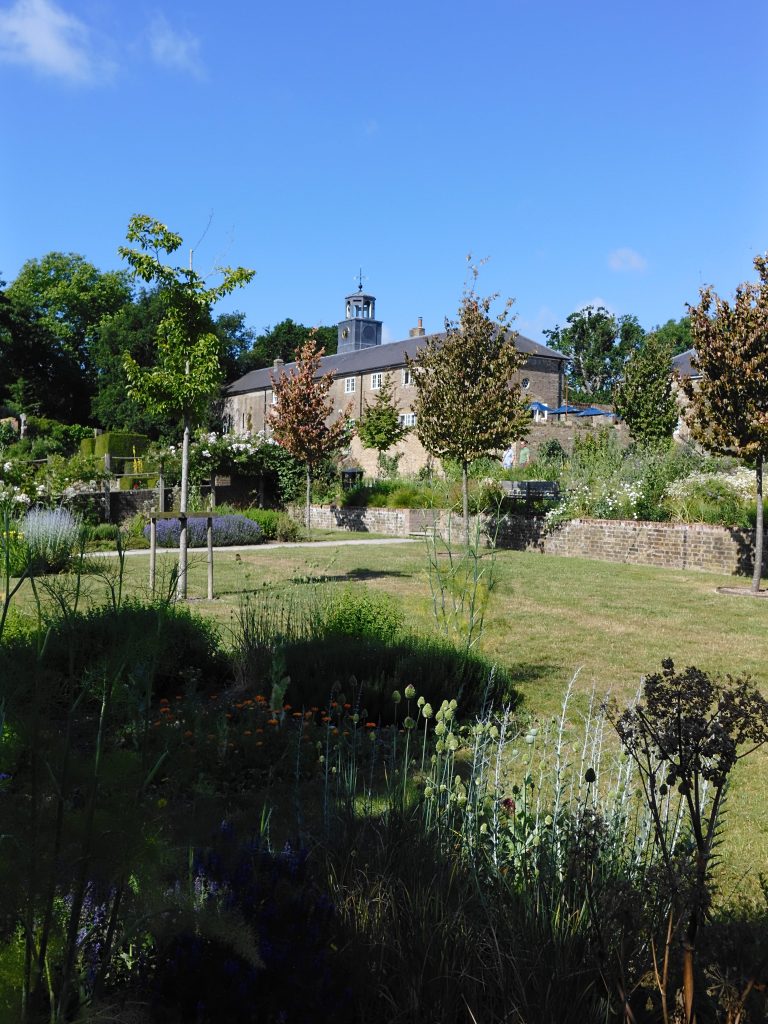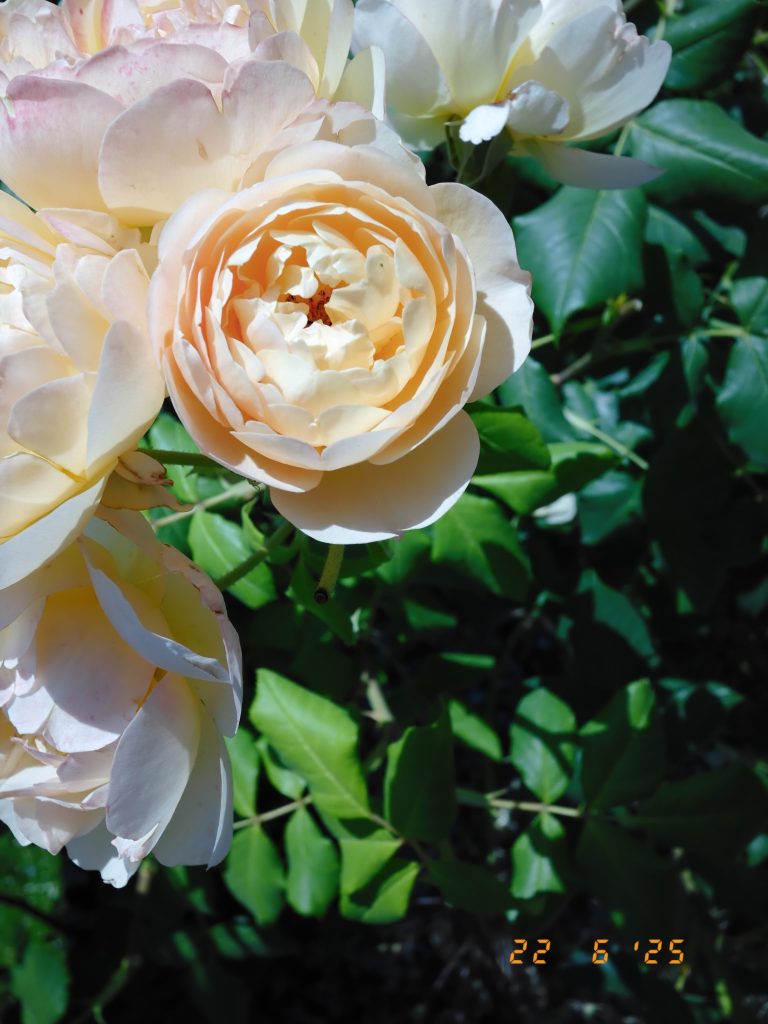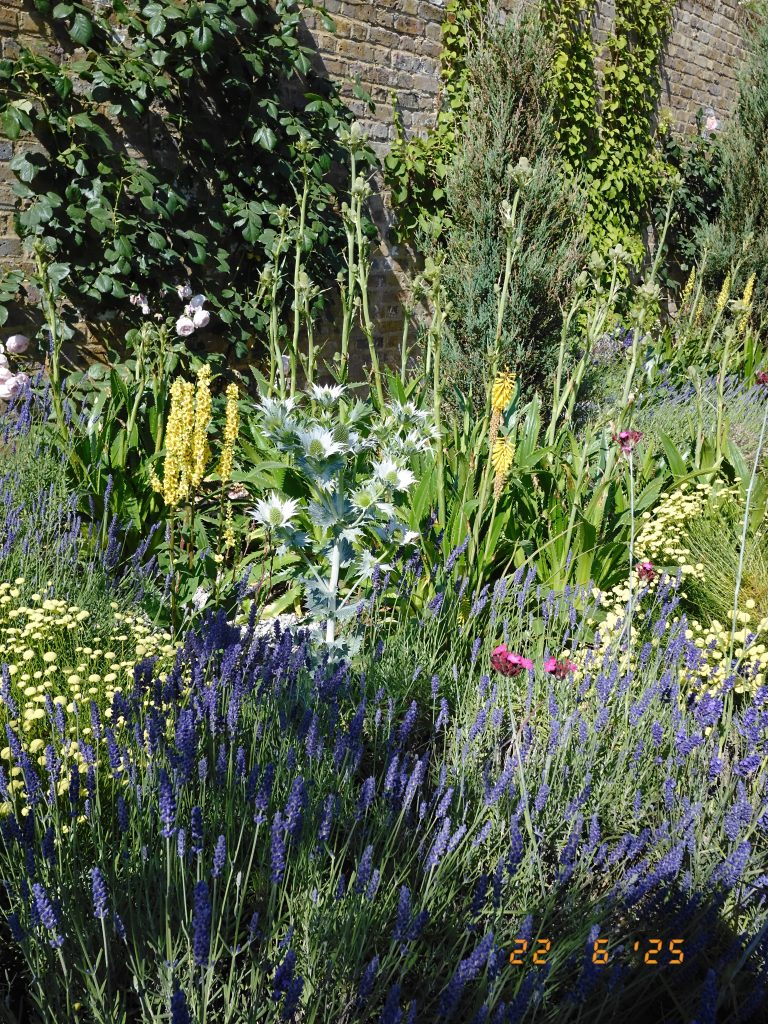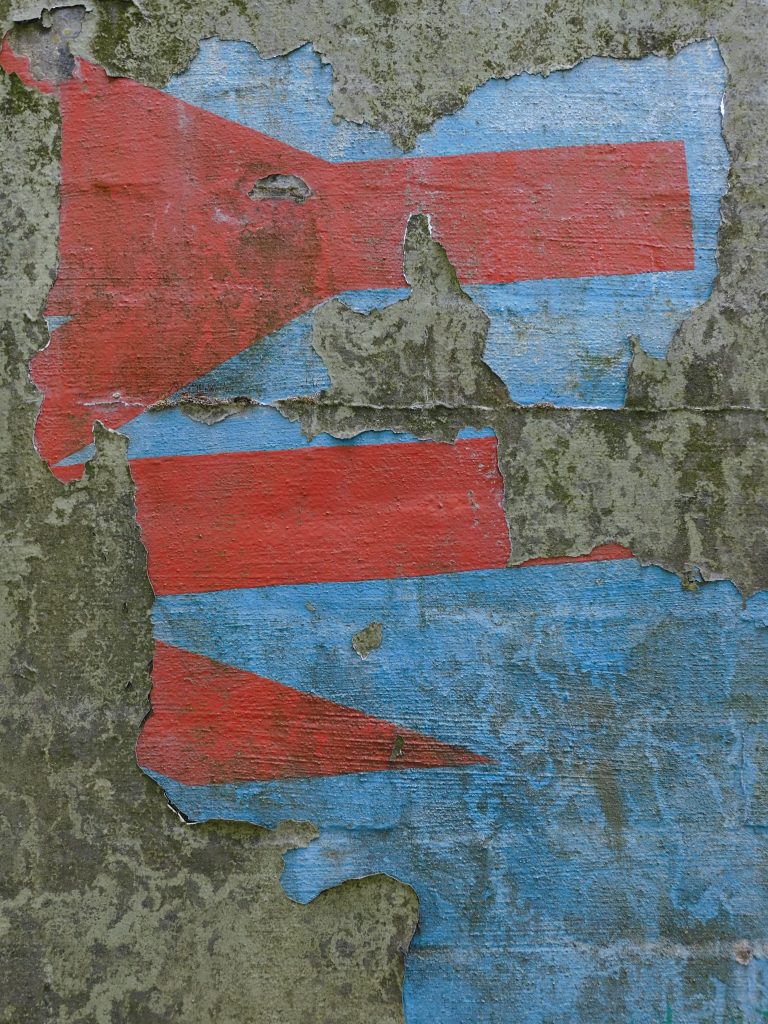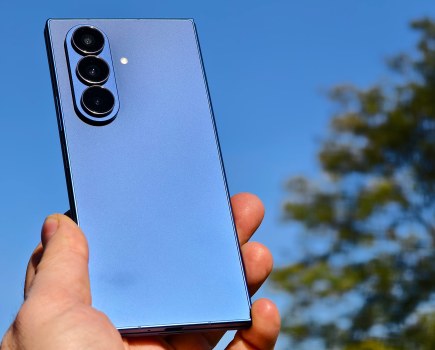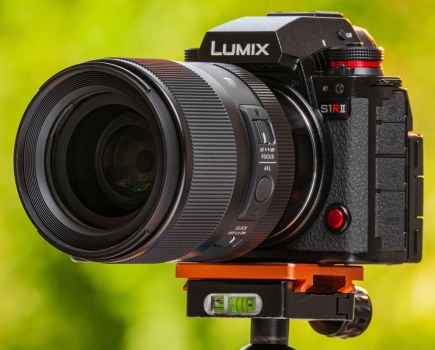Amateur Photographer verdict
The Fujifilm X half does a great job of emulating the experience of shooting film, without the ongoing costs. Yes it’s pricey, but it’s packed full of creative features, making it a lot of fun to use.- Attractive retro design
- Compact, lightweight, pocketable size
- Lovely Fujifilm colour output
- Manual controls
- Pixel-level image quality isn’t great
- No raw file recording
- Browsing images in playback is slow and awkward
The Fujifilm X half is a fixed-lens digital compact camera that aims to recreate the experience of shooting film. Not just any kind of film either, but as its name suggests, specifically half-frame 35mm. It’s small, lightweight and pocketable, and it’s a lot of fun to use. It’s never going to count as one of the best Fujifilm cameras in terms of image quality, but that really isn’t the point.
Fujifilm X half at a glance:
- $849 / £699
- 3:4 vertical format shooting
- 32mm equivalent f/2.8 lens
- 17.7MP 1in sensor
- ISO 200-12,800
- 2.4in, 0.92m-dot screen
- Optical viewfinder
- Film camera mode
Let’s get one thing straight from the start of this review. If you’re hoping the X half might be a more affordable version of the firm’s popular enthusiast-focused Fujifilm X100VI, then despite any family resemblance, that’s simply not what you get. Instead, the X half is a very different kind of camera that leans more towards the snapshot brigade. It doesn’t shoot raw files, and it barely panders to video at all.
At $849 / £699, the X half certainly isn’t cheap. If you really want the film experience, you could buy a basic 35mm half-frame camera like the Kodak Ektar H35N, shoot at least 25 rolls of Kodak Gold, and then get them developed and scanned, all for less money. That’s perhaps not an entirely fair comparison, as the X half is a much more sophisticated camera. But even so, is it really worth the money?
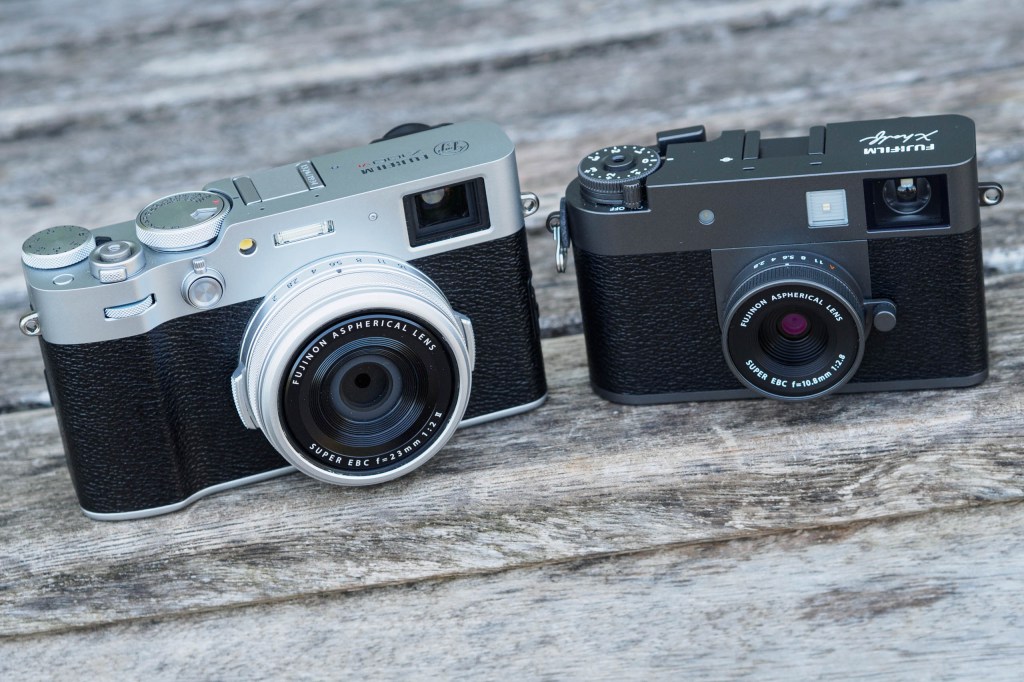
Features
The X half is trying to be a ‘digital half-frame’ camera, but what exactly does this mean? Essentially, it’s built around the idea of shooting everything in vertical format with a 3:4 aspect-ratio, primarily for sharing on social media. This being Fujifilm, the firm’s popular Film Simulations are very much to the fore, along with an array of creative filters and film effects. It also has a unique ‘Film Camera Mode’ that I’ll cover in detail later.

That vertical-format design means that the sensor, rear screen and optical viewfinder are all rotated through 90° compared to normal. The sensor itself is a conventional 20MP 1in-type chip, but it’s cropped down to give 17.7MP output. That equates to an active image area of 8.8 x 13.3mm, which is considerably smaller than the 17 x 24mm of half-frame film. But if you care about this, you’re probably not the target audience.
The sensor provides a sensitivity range from ISO 200-12,800, which immediately marks the Fujifilm X half apart from actual film cameras. It’s possible to set timed shutter speeds as long as 15 minutes, or as short as 1/2000sec. There’s no continuous shooting, though – you take one frame at a time.
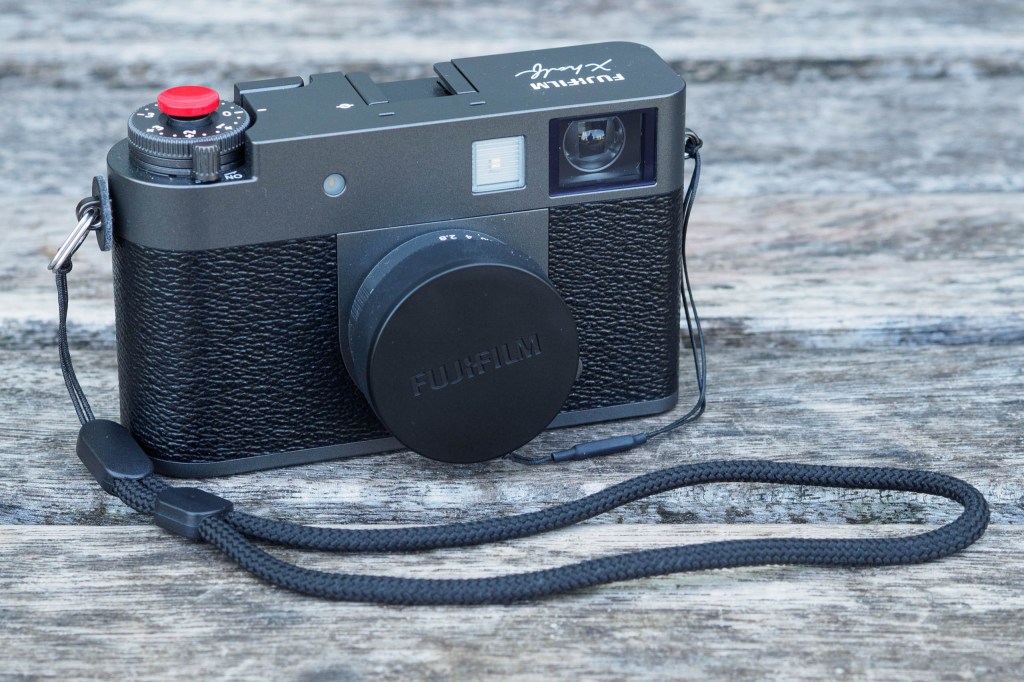
The built-in 10.8mm f/2.8 lens is equivalent to 32mm in terms of angle-of-view, and f/8 for depth-of-field (so don’t expect much, if anything, in the way of blurred backgrounds). Despite its small size, it manages to include 6 elements in 5 groups, with 3 aspherical elements. But there’s no stabilisation of any sort, and no filter thread either. When not in use, the lens can be protected by a push-on rubber cap.
On the back, the main screen is pretty small, but it’s complemented by a second slim vertical screen that shows the film mode while shooting and aids with navigating the menus. Fujifilm lists the screen spec as 2.4in and 0.92m-dot resolution, but this only makes any sense if you accept that both screens are in fact parts of the same panel, masked-off by the camera’s back cover. The one that you use for composing and reviewing your shots works out at about 1.8in and 0.53m-dot; in other words, tiny and very low resolution.
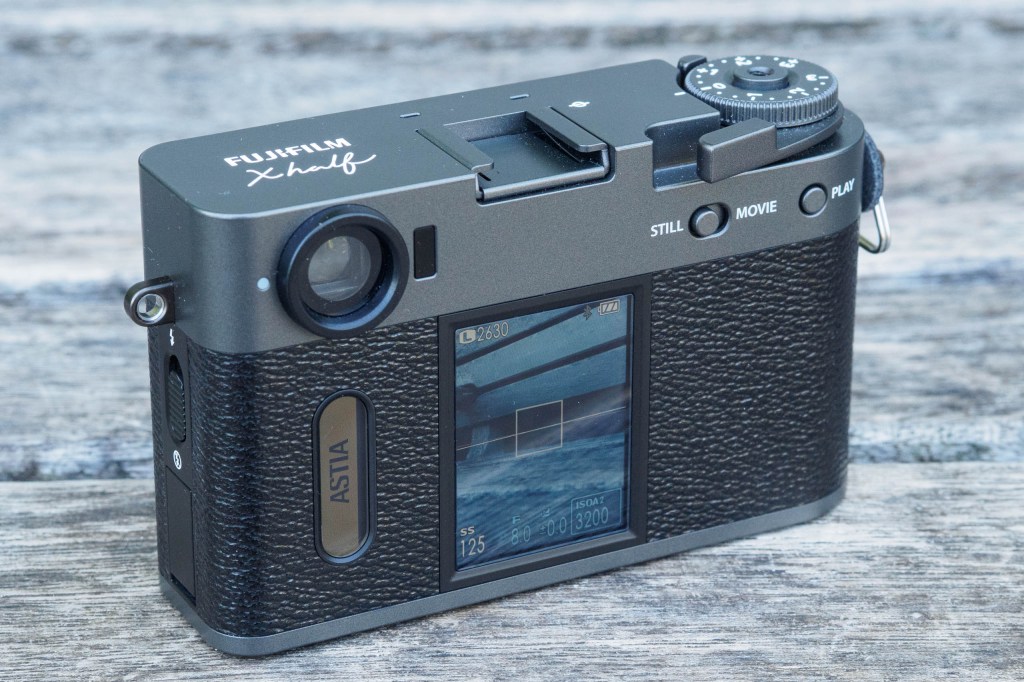
Autofocus employs on-sensor contrast detection, with a choice of either a large central zone, or 9 zones in a square 3×3 grid. The only concession to modernity is that face detection is included. You don’t get any other subject recognition modes, but they wouldn’t make much sense here anyway.
Thirteen Film Simulations are onboard, giving a range of attractive colour looks, and you can select between them easily by swiping up or down on the secondary screen. Switch to filter mode, and you get a choice of 20 effects, some of which have sub-variants. We’ve seen many of these filters before, but Fujifilm has added some new film-inspired options, namely Light Leak, Halation, and Expired Film. You can’t add a filter on top of a film simulation, though – it’s either one or the other.
Video recording is extremely limited, at Full HD and 24fps in vertical-format 3:4, or up to 48fps in slow-motion. A stereo microphone is built-in, but there’s no option to use an external unit. Slightly surprisingly, you can monitor audio via the USB-C port using a 3.5mm adapter.
Smartphone connectivity is provided by built-in Wi-Fi and Bluetooth, using the dedicated X half app. This allows you to copy images from the camera to your phone for sharing, but it doesn’t provide any kind of camera remote control. The app is also used to ‘develop’ your photos in the Film Camera mode.
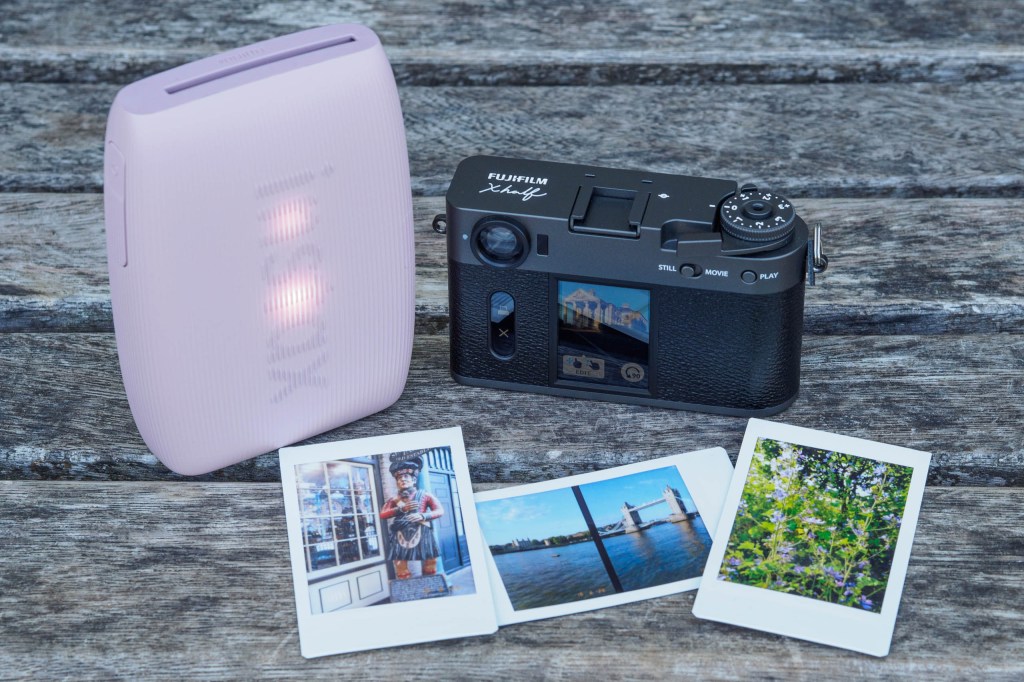
One welcome new feature is that the X half can now print directly to Fujifilm’s Instax Link range of instant-film printers via Bluetooth. Given that X-system cameras always used to work with the older Wi-Fi Instax printers, this feels long overdue. The only disappointment here is that the original Instax Mini Link from 2019 isn’t officially supported. I tested it and found that it paired and printed quite happily, but the colours ended up dark and muddy compared to printing the same images on the Mini Link 3.
Fujifilm X half key features:
- Shutter button: The shutter button is threaded to take a screw-in soft release, but old-fashioned cable releases don’t work. In fact, there’s no remote release option at all.
- Cold shoe: There’s a shoe on the top of the camera, but it has no contacts for flash. There’s no mic input either, so it’s not clear what Fujifilm thinks the shoe is for.
- Storage: Your photos and videos are stored on a full-size SD card that slots in beside the battery.
- Flash: A small LED flash is built-in, and enabled via a sliding switch on the side. But it’s not much good for anything.
- Power: Fujifilm’s familiar NP-W126 battery promises 880 shots per charge and is topped up via USB-C.
- Connector: There’s just a single connector port, which is USB-C for battery charging and data transfer.
- What’s in a name? While ‘X half’ is prominently written on top of the camera, the official model designation is actually X-HF1.

Build and handling
Probably the most striking thing about the Fujifilm X half is its size. It’s tiny, weighing a mere 240g including the battery and SD card, and measuring just 105.8 x 64.3 x 45.8mm (including the lens). That makes it very similar in size to the classic Olympus PEN half-frame 35mm compacts from the 1960s, which I suspect is no coincidence.
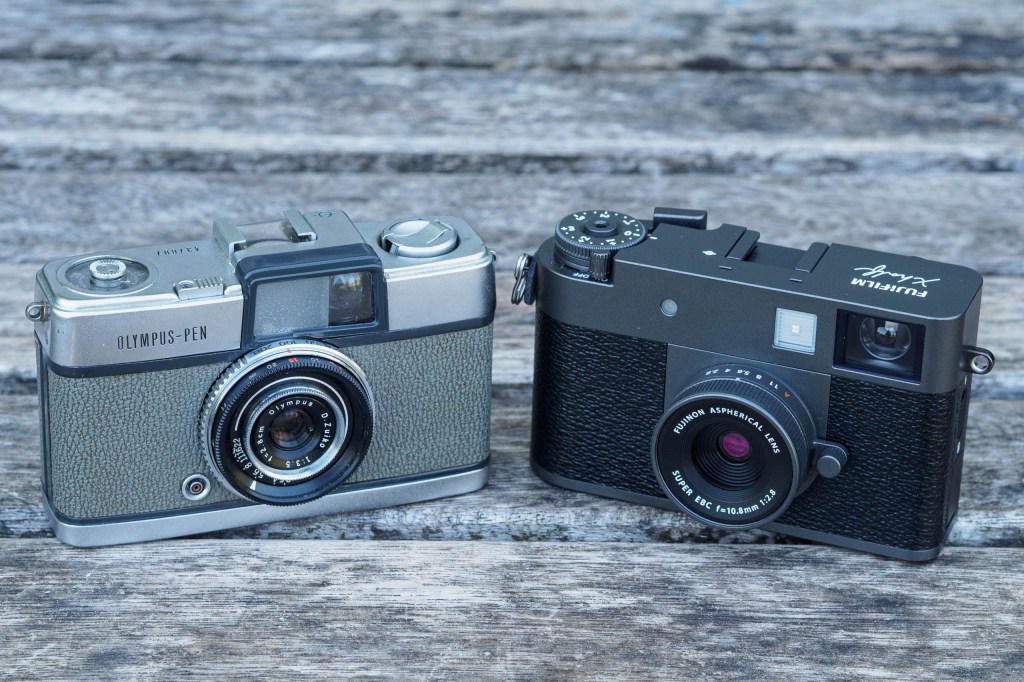
Fujifilm is offering the X half in three colours: black, silver, and charcoal. Initially I liked silver the best, but I’ve had the charcoal version on loan for a couple of weeks for review, and it has really grown on me. If I were buying, it’s probably the one I’d get.
Despite the camera’s petite size, it feels surprisingly secure in your hand. The body shell is constructed from plastic, and while it doesn’t quite offer the same premium feel as other X-series cameras, it still seems pretty sturdy. There’s a decent amount of space for your fingers, including a large blank area on the back for your thumb. The textured leatherette coating is nice and grippy, too.
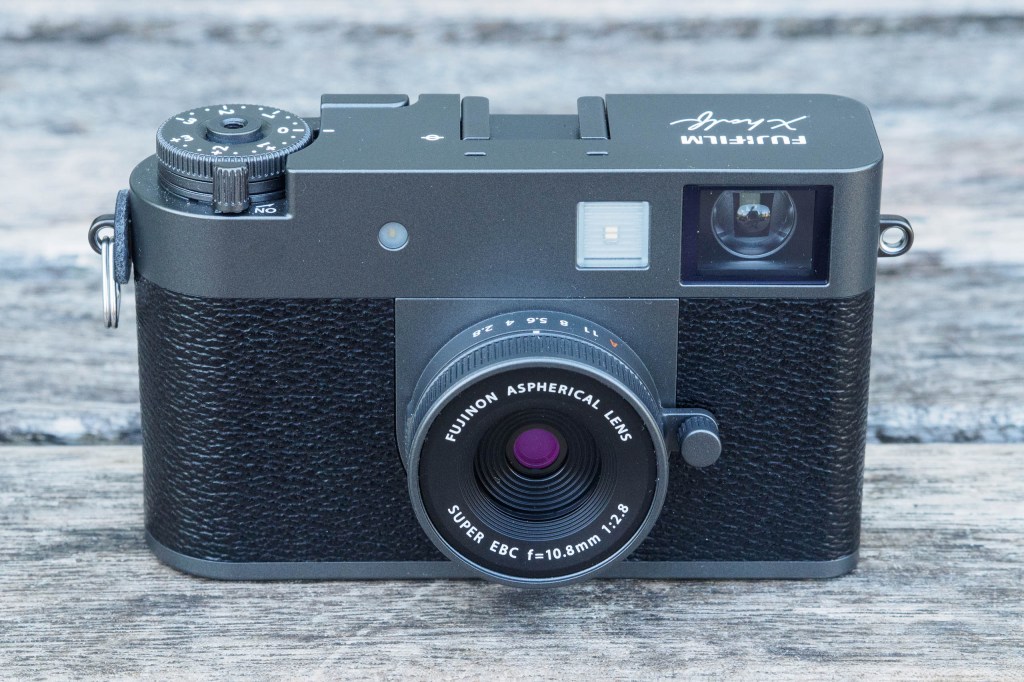
That small body means that there isn’t space for many controls, but you do get arguably the two most important ones. An aperture ring on the lens offers settings from f/2.8 to f/11 in whole-stop steps, while a large exposure compensation dial on top covers a range of +/- 3 stops. You also get a manual focus ring on the lens – although I’m not convinced anyone will ever use it.
While you don’t get dials for setting shutter speed or ISO, both can be controlled using the touchscreen. That’s really clunky in practice, though, and personally, I suspect most users will spend their time shooting in either aperture priority or full auto. But it’s nice to have the option of manual control if you need it.
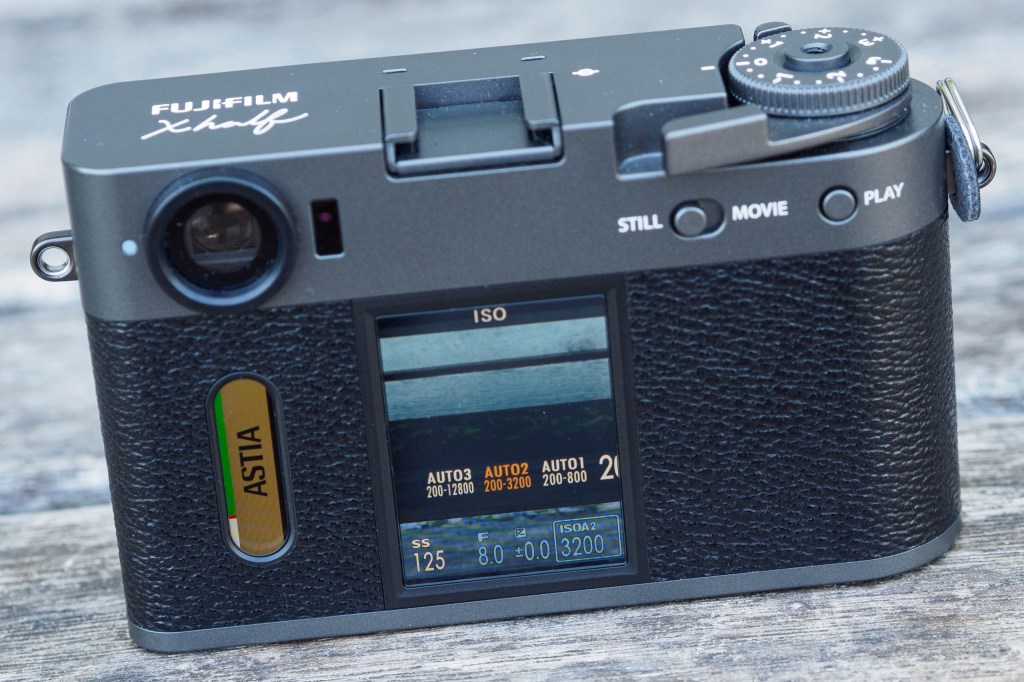
To enter menus and change settings, you also use the touchscreen. Swiping up, down, left or right on the main screen calls up various options, including a quick menu, the main menus, film simulation/filter mode, and film camera mode setup.
In the main menu, the secondary screen is used to select the various sub-sections. Given the limited screen area available, Fujifilm has done a pretty good job of making this all work.
There’s one other major control on top, which resembles a film wind-on lever. This sits flush to the body when the camera is powered off, but flicking the power switch to the On position pushes it slightly outwards, enabling operation by your right thumb. This control has three functions.
In normal shooting, it’s used to create “2-in-1” diptychs: in other words, two frames placed side-by-side. All you do is take the first shot, pull the lever, and take the second. The camera creates the composite file and stores the two individual frames alongside. You can also create a 2-in-1 by selecting the first image in playback mode by pulling the lever, and then shooting the second. Alternatively you can generate them after the event using the X half app on your phone.
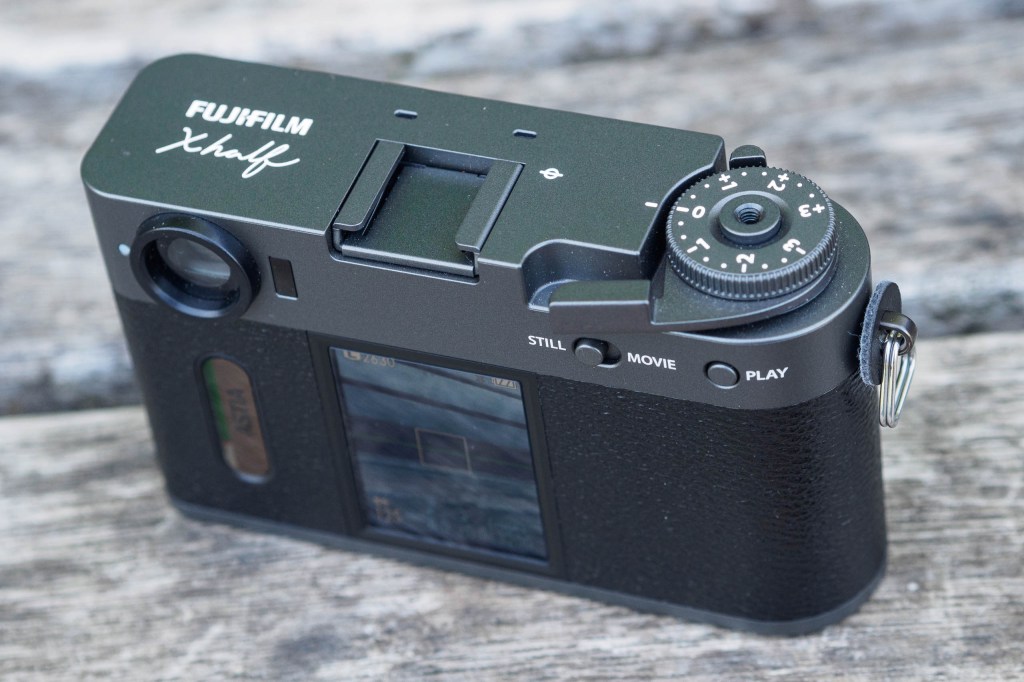
Also, pressing the lever inwards brings up a quick review of the last photo you shot; I found this surprisingly useful. Last but not least, in film camera mode you use the lever to “wind on” after every shot.
Viewfinder and screen
In keeping with its film-camera pretensions, Fujifilm has fitted the X half with an optical viewfinder. It’s usable, but not particularly great. It’s rather small, shows obvious barrel distortion, and isn’t particularly accurate, covering somewhat less than the final image area. It’s nowhere near as nice as the viewfinder in my original Olympus PEN from 1959, which is brighter and has nice, clear framelines indicating the expected view.
Like old film cameras, there’s no information display in the viewfinder. However, a small status LED alongside lights up green to confirm focus, and in film camera mode, flashes red if you haven’t wound on. On the silver version of the camera, I found this LED difficult to see when I was shooting outdoors in bright sunlight. But it’s much more visible against the darker background of the charcoal version.
As for the rear screen, it’s tiny and not very detailed at all. But it does at least show your composition accurately, while previewing colour and exposure. If you want, you can display gridlines and an electronic level, too. But it’s not especially bright, which means it’s difficult to see in bright sunlight.
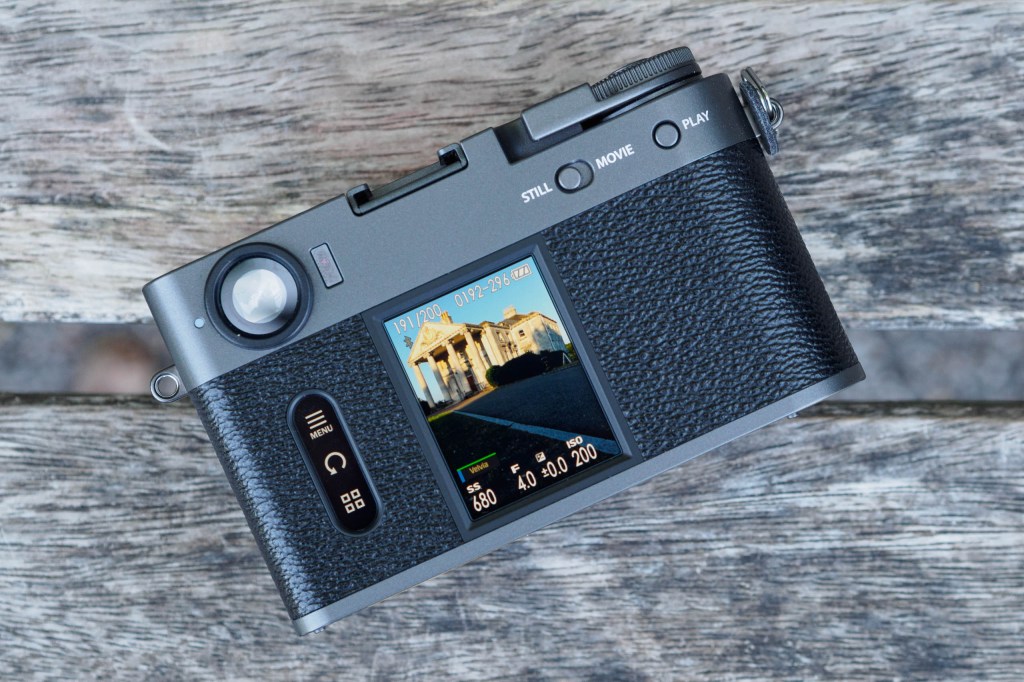
Autofocus
Compared to other modern cameras, the X half’s autofocus system is distinctly primitive. By default, it employs a single, rather large zone in the middle of the frame. This feels suitably film-era and makes perfect sense for viewfinder shooting, but it does mean you need to focus and recompose with off-centre subjects. Alternatively, you can switch to a 9-area mode, which gives a bit more flexibility with off-centre subjects when you’re using the screen.
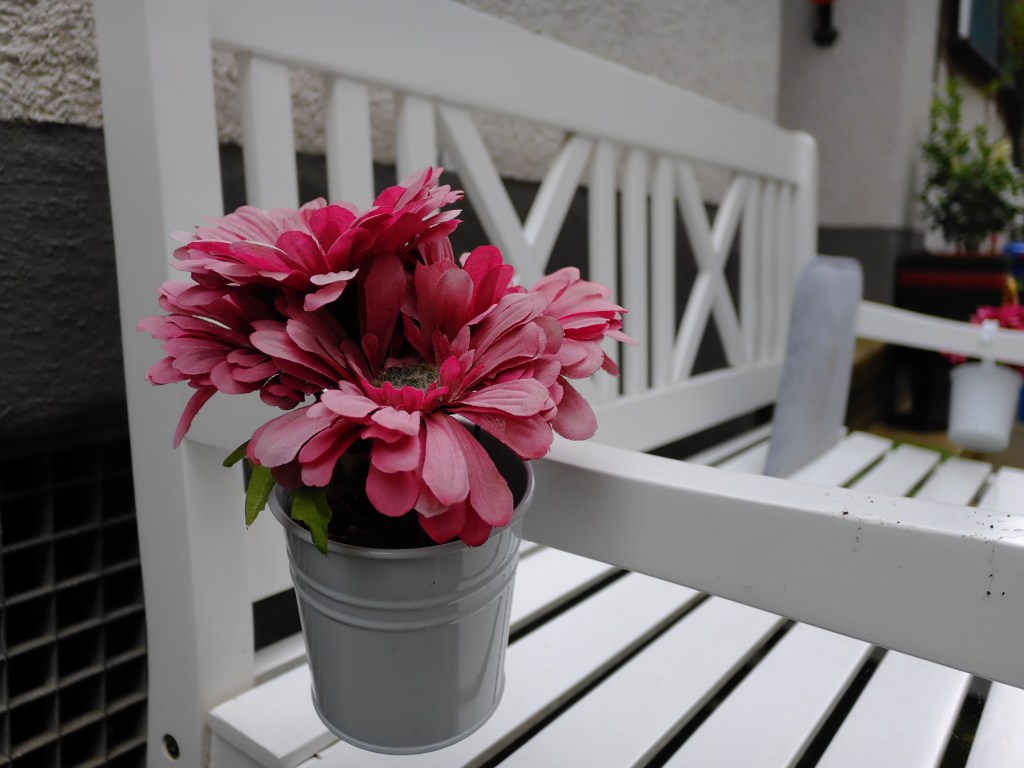
Click on any sample image to see the full resolution version. All the examples in this review are unedited camera JPEGs
Faced with static subjects, or those that only move slowly, the X half’s autofocus works just fine. It’s not exactly fast, but it’s not painfully slow either. I’d say it’s perfectly adequate for the kind of everyday snapshots that the camera is best suited to taking. That 32mm equivalent lens isn’t exactly ideal for sports or action, after all.
For photographing people, it’s best to enable face and eye detection, as this will attempt to work out where they are within the frame, and focus in the right place. The tracking is spectacularly laggy, though, so I wouldn’t try to focus on people while they’re actually moving.
Manual focusing is available when you need it, but it can be pretty difficult to judge on the tiny screen. The only available focusing aid is a peaking display, in either red, white, blue or yellow. I set it to red for maximum visibility and found this worked quite well. Obviously, you can’t use the optical viewfinder for manual focus, at all.
Performance
The Fujifilm X half isn’t the quickest camera to start up, taking a second or two to get its act together after you flick the power switch. But it’s perfectly responsive while you’re shooting to both the touchscreen and the physical controls. It’s pretty discreet too, with just a barely audible click from the in-lens shutter if you turn off the fake shutter sounds. Nobody will notice that you’re using it.

If I have one complaint about the X half’s operation, it comes in playback mode. As there are so few physical controls, this is operated entirely using the touchscreen. There’s nothing wrong with that in principle; you swipe left and right to go through your images, double-tap or pinch to zoom in, and swipe up or down to show/hide exposure data. The problem is that swiping through your photos is painfully slow and laggy, as you often have to wait a second or two for each image to load up properly.
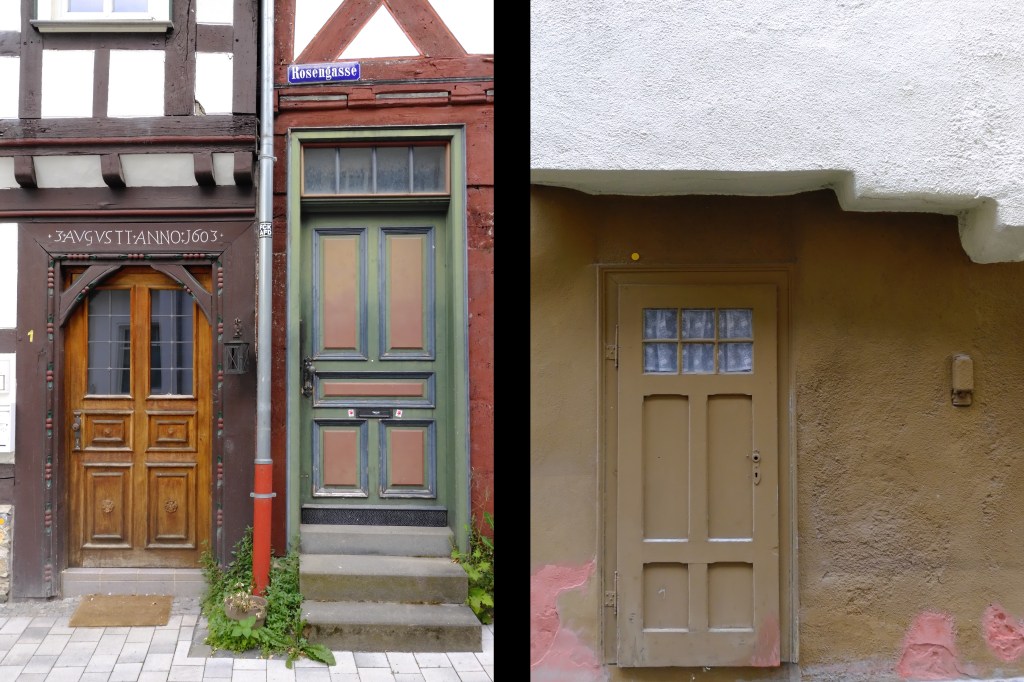
Battery life is great, especially when using the viewfinder, where Fujifilm’s 880-shot rating seems entirely reasonable. Even if you use the screen, you should easily get several hundred frames from a single charge. As you can also top up the battery in-camera, I suspect plenty of users will get by without ever needing a spare.
The lens is a perfectly competent performer, at least as far as can be judged from the JPEG-only output. While I was quite happy shooting with it wide open, I think you probably get the sharpest results overall at f/4 and f/5.6. I’d generally avoid stopping down much further than that, though, as diffraction blurring increasingly destroys any fine detail.
As usual for Fujifilm, metering and auto white balance are both very reliable. That’s absolutely essential here, given that the camera doesn’t record raw files.
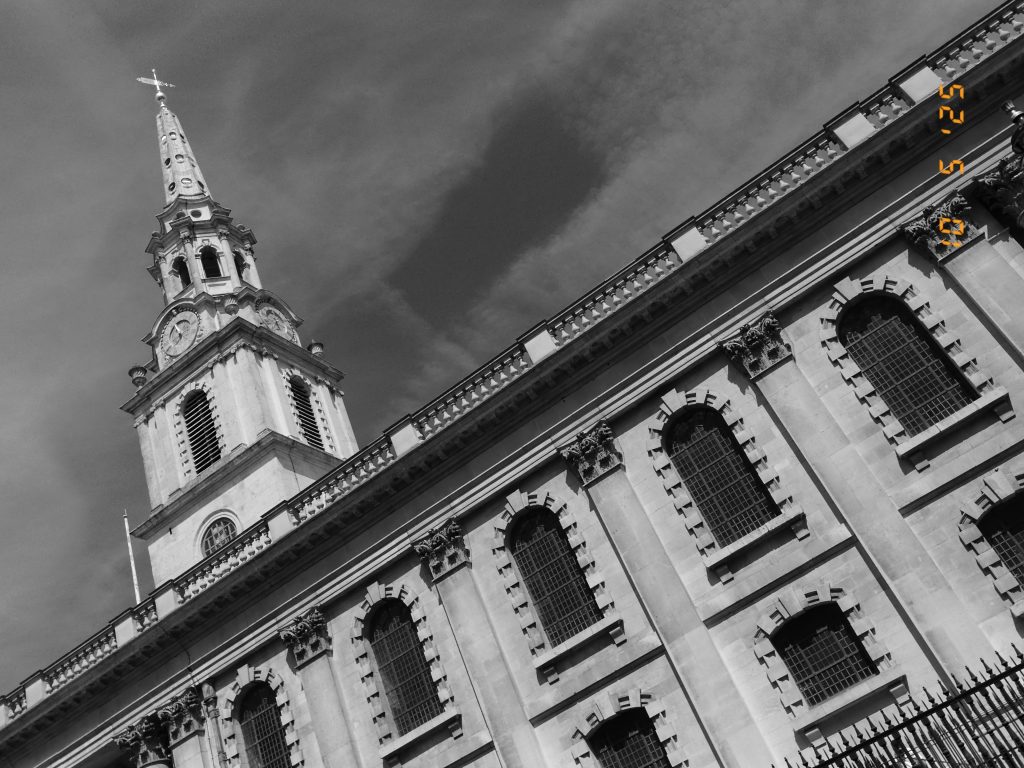
When it comes to colour processing (or indeed black & white), you get all of Fujifilm’s most popular Film Simulations – Provia, Velvia, Astia, Classic Chrome, Reala Ace, Classic Neg, Nostalgic Neg, Eterna, Acros (for black & white) and Sepia. There’s a whole array of attractive looks to play with here; I find it impossible to believe that anyone won’t find several that they really like. Indeed, if there’s one brand that can get away with not letting you shoot raw, it’s Fujifilm.
Credit where credit is due, too, for Fujifilm’s new film-inspired filter modes. Light Leak is really nicely done – it gives realistic effects reminiscent of shooting with toy cameras such as Holgas, but it’s not previewed onscreen and gives a different result each time, so it doesn’t end up looking repetitive in the way it might have done. I also rather like the Expired Film options, which give soft contrast and muted tones, with the option of adding subtle green or red colour tints.
Where things start to fall apart a little, though, comes with the JPEG processing, and specifically with respect to noise reduction and fine detail. At low ISOs, images are absolutely fine when viewed full-screen on my 24in monitor. But if you zoom in and examine your files close-up, they look distinctly rough at the pixel level. To be honest, they’re not as good as I’d expect from a 1-inch sensor in this respect.
This does have to be taken in context, though. If you accept the premise that the X half’s files will mostly be viewed on smartphone screens via social media, then the pixel-level quality simply doesn’t matter. People who care about such things should probably be buying an X100 instead.
Keeping all this in mind, in my view the image quality is acceptable up to about ISO 1600, but it deteriorates rapidly at higher settings. I’d probably set the camera to shoot in Auto ISO with an upper limit of ISO 3200. Most of the time this won’t be a problem, as you can open the lens up to f/2.8 and manually select a slow shutter speed when necessary (Auto ISO will try to maintain a minimum shutter speed of 1/125sec). But really, this is a camera where you’re better off sticking to shooting in good light.
Film camera mode
While the X half can function as an entirely conventional digital camera, it also has a unique ‘Film Camera Mode’. This goes out of its way to replicate the film-camera experience, forcing you to use the optical viewfinder, ‘wind on’ between shots using the lever, and then ‘develop’ your photos at the end. It’s quite entertaining, and here’s how it works.
First, you need to select a film simulation or filter mode, as you’ll be locked into this for the duration. Then, swipe down from the top of the touchscreen to enter the initial setup. Here you choose the number of shots – 36, 54, or 72 – and your exposure mode, either Aperture Priority or Auto. Press the onscreen ‘start’ button, and you’re ready to go.
At this point, it’s really just a case of choosing your settings, looking through the viewfinder, and shooting. You also need to remember to ‘wind on’ between frames, as otherwise, the LED beside the viewfinder will blink red and the camera will refuse to release the shutter. Just as with film, this can result in frustratingly missed shots.
Once you’re in film camera mode, you can’t use the rear screen for either shooting or playback. Instead, it shows an attractively designed control panel, complete with a faux-LED frame counter. You can choose here whether to have the date ‘printed’ onto your images, and switch between autofocus and manual focus.
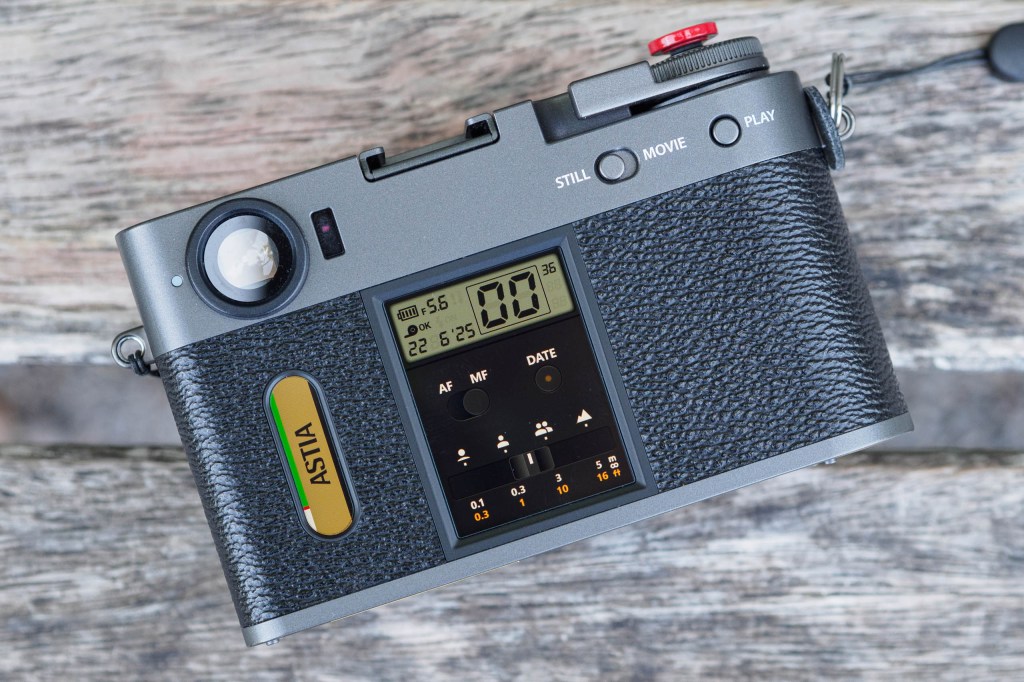
As there’s no way of seeing the effects of your exposure settings, or indeed knowing what the camera has focused on, the shooting experience is genuinely quite like using a compact film camera. You can only set the aperture or exposure compensation based on guesswork and experience. Unlike a real film camera, though, the X half will adjust the ISO shot-by-shot, so you can keep shooting indoors or in low light.
If you choose to use manual focus, again it’s essentially guesswork. Rotating the focus ring moves a pointer along an onscreen scale that’s marked in feet and metres, but the camera won’t indicate whether you’ve set the correct distance. There are also four pictograms for landscape, groups, individual portraits, and close-ups, and you can quickly select one of these by tapping the touchscreen.
If you’ve ever used a scale-focusing camera like a Rollei 35 or Olympus Trip 35, or indeed the recent Pentax 17, you’ll know the idea. At least with the X half there’s less risk of getting badly out-of-focus shots, due to the inherently extensive depth-of-field.
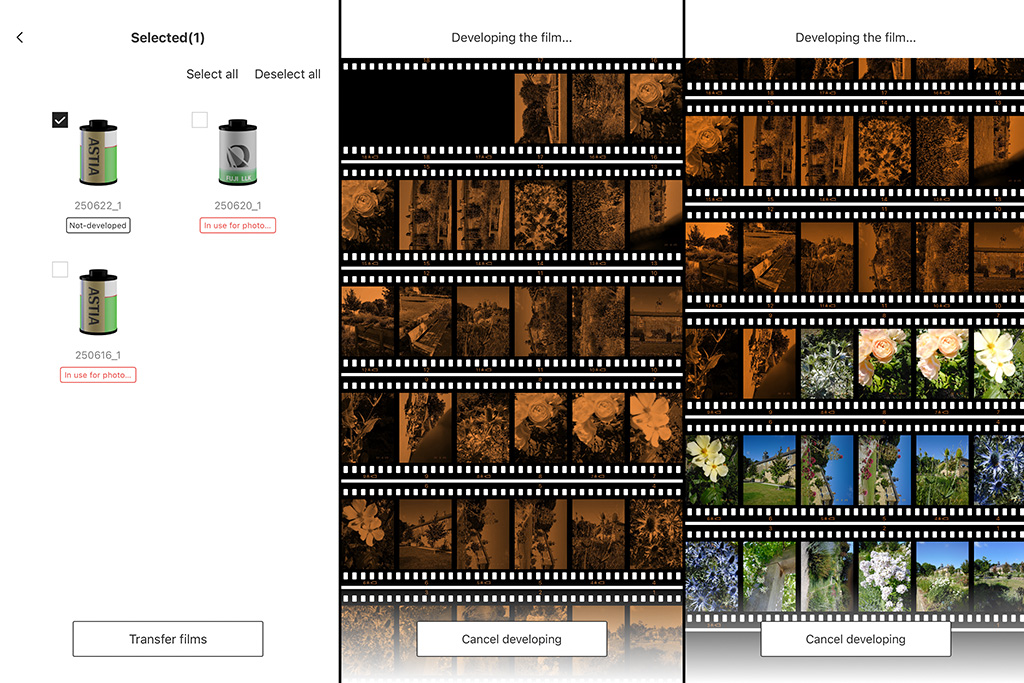
Once you’ve taken the specified number of photos, you must ‘develop’ your film. This is done on your phone, using the X half app. The process is quite fun – initially the app shows you strips of negatives, which then turn, one-by-one, into positive images. Once that’s complete, you can browse through your photos and share them directly from the app. If you decide you don’t want to shoot all those frames after all, you can also “rewind” early by double-tapping the small screen.
When you look at your photos, chances are you’ll get a pretty authentic film-camera feeling. A lot of the time, they’ll come out absolutely fine, although they won’t necessarily be perfectly framed and you’ll probably get wonky horizons. But you’ll also get all the failures that will be familiar to anyone whoever shot film, especially with a compact camera.
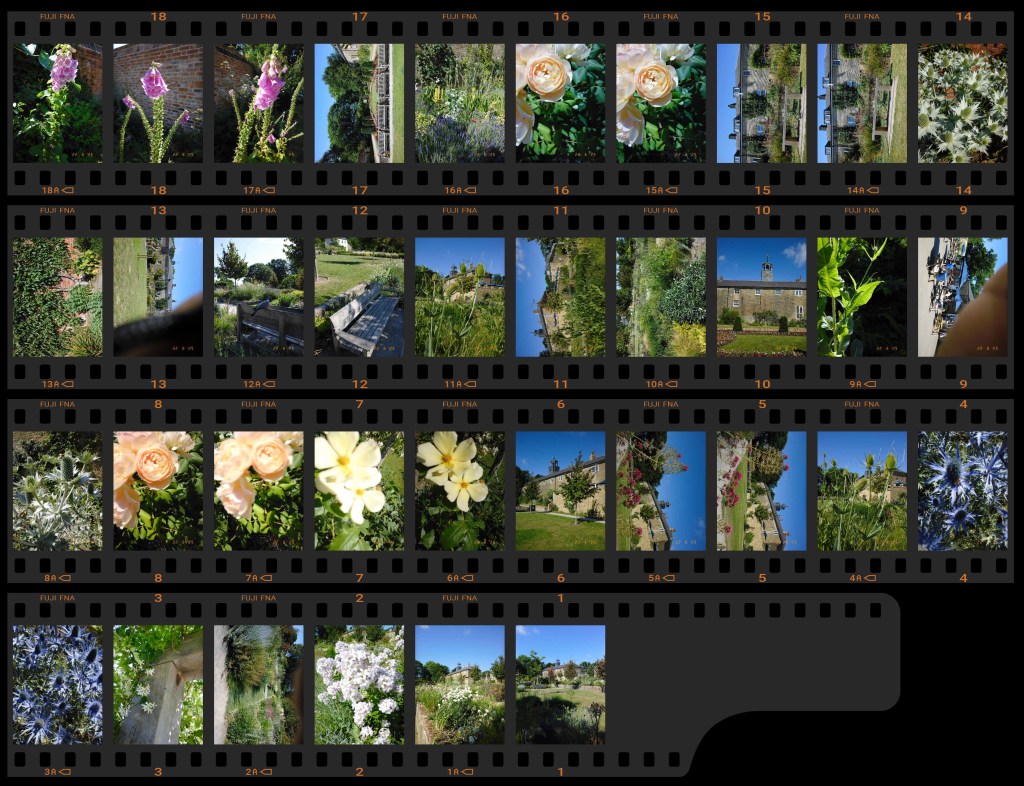
If you try to shoot closeups, they’ll be wildly off due to parallax error between the viewfinder and lens. If you select large apertures in bright light, that’ll give washed-out, overexposed images. Occasionally, you’ll find your fingers got in the way of the lens. Yes, this all happened to me, and all in my first “roll”, too.
Put like this, you’ll probably wonder why you’d ever use film camera mode at all. Isn’t this exactly why we all switched from film to digital in the first place? There’s no especially good answer to that, other than that it’s fun, and you don’t have to pay for the film or processing. Here’s a selection of images shot in film camera mode.
One last point worth knowing is that images shot in film camera mode can’t be viewed on the camera in normal playback. However, they are stored on the memory card in separate folders, along with a “contact sheet”. So you can still copy them across to a computer normally.
Fujifilm X half: Our Verdict
The Fujifilm X half is a charmingly eccentric little camera that’s quite unlike anything else on the market. It offers much of the experience of shooting film but without the ongoing expense of developing it. You do need to accept, though, that it’s not for enthusiasts who like tinkering with their exposure settings and then perfecting their images in post-processing. If you wanted a cut-price X100, then seriously: this isn’t it.
Instead, the X half is probably best seen as a casual snapshot camera that’s ideal for documenting social events, much like 35mm film compacts used to be. It’s not merely a point-and-shoot, though; I really enjoyed being able to change film mode just by swiping on the screen, while the exposure compensation dial and aperture ring provide extra creative control. There’s a lot to be said for getting Fujifilm’s lovely Film Simulations in such a pocketable package, too.
Features such as the Film Camera Mode, diptych shooting, and the film-inspired filters all add to the appeal. I think it’s fair to say that some of these might never get used again after the initial novelty has worn off, but it’s still nice that they’re there.
Fun as it is, though, the X half does feel expensive for a 1-in sensor compact with a fixed prime lens that doesn’t even shoot raw. For really not that much more money, you could get the Fujifilm X-M5 or X-T30 II with a kit zoom, giving those all-important film simulations, but with much better image quality and the versatility of interchangeable lenses. For enthusiast photographers, either of those cameras would be a better choice. But for those who just want to enjoy shooting with a small, portable camera, the X half still has plenty of appeal.

Follow AP on Facebook, X, Instagram, YouTube and TikTok.
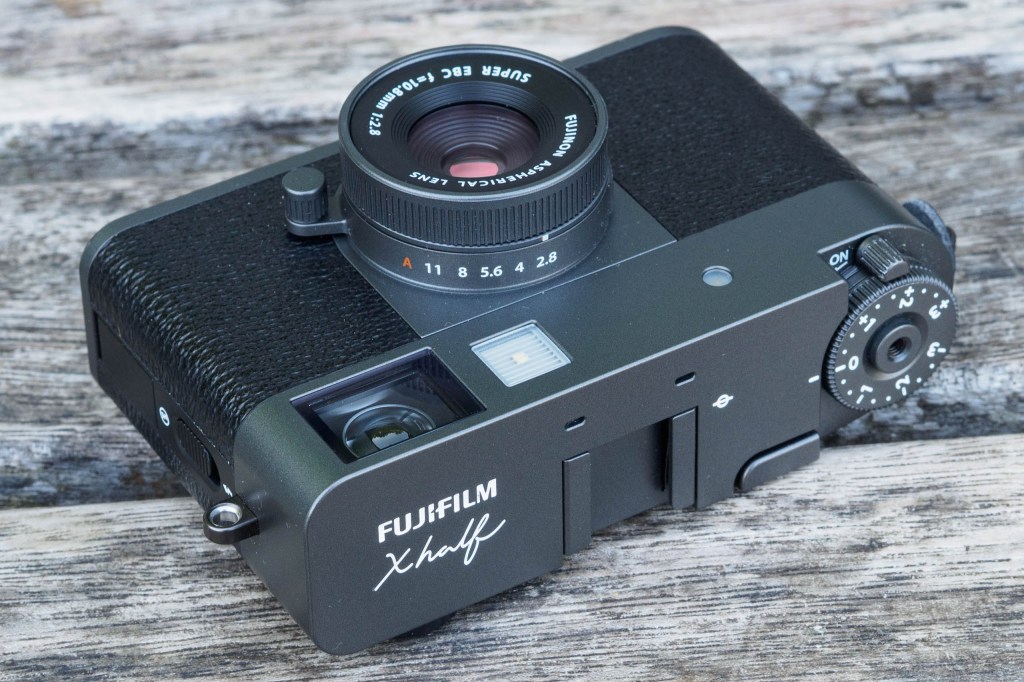
Fujifilm X half: Full specifications
| Sensor | 17.7MP BSI CMOS, 8.8 x 13.3mm |
| Output size | 3648 x 4864 |
| Focal length magnification | 3x |
| Lens | 10.8mm f/2.8 (32mm equivalent) |
| Shutter speeds | 15min – 1/2000sec |
| Sensitivity | ISO 200-12,800 |
| Exposure modes | PASM |
| Metering | Multi (256-zone) |
| Exposure comp | +/-3 EV in 0.3EV steps |
| Continuous shooting | n/a |
| Screen | 2.4in, 0.92m-dot fixed touchscreen |
| Viewfinder | Optical, 0.38x magnification, 90% coverage |
| AF points | 9 |
| Video | Full HD, 24fps |
| External mic | n/a |
| Memory card | UHS-I SD |
| Power | NP-W 126 Li-ion |
| Battery life | 880 shots (OVF) |
| Dimensions | 105.8 x 64.3 x 45.8mm |
| Weight | 240g inc battery and card |

